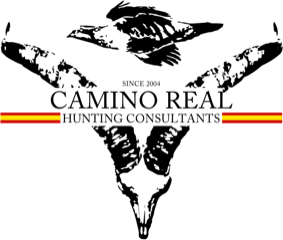Through the Mountains of Kazakhstan
A story that started in February of 2021
Juan, the protagonist of the following hunt is not a stranger to us. He is a friend, an extraordinary friend. When this happens, and you organize an expedition of this kind to a good mate, the pressure of making sure that everything runs smoothly is even greater. I am personally afraid of what I call the “recommended syndrome”. You know, when you go to visit a special doctor because your aunt’s uncle, who is also your cousin’s friend knows him -the doctor- perfectly well and you end up having a surgery in the wrong foot? I think you know where I am going… We met while we were both working for the same company some years ago, and as we each knew that we were both hunters, you can guess what our conversations were all about on Mondays. Yes, terrible hunting lies and battles from the weekend.
In February of 2021, while we were on our way to a driven hunt in Northern Spain, Juan told me about his willingness to pursue his very first international mountain hunt. We discussed different alternatives such as the Dagestan Tur or any of the different Ibex subspecies. After clarifying the pros and cons, Juan made his decision, which was to hunt Mid-Asian Ibex in Kazakhstan. The chosen date was August of 2022.
¿Kyrgyzstan or Kazakhstan? ¿Where to go and why?
Although we conduct Mid-Asian Ibex hunts in other countries as well (Tajikistan and Uzbekistan), the two most common destinations for the Tien-Shan or Mid-Asian Ibex subspecies (Capra sibirica alaiana) are Kyrgyzstan and Kazakhstan. Often, when we are contacted by hunters interested on this hunt, many of them ask which of them is the best destination and what are the main differences of hunting in one place or another. Kyrgyzstan or Kazakhstan? Well, it depends.
Based on the fact that the ibex subspecies is exactly the same in both countries, we must basically pay attention to two main things. First of all, to the economics, which is obviously an important part of the equation. In Kyrgyzstan, the hunt is usually offered as a closed package that includes the trophy fee of an ibex irrespective it’s trophy size -whether it is a small or a big billy-. On the other side, in Kazakhstan, the price of the hunt consists of the organization cost plus the trophy fee, which varies depending on the trophy size. On a general basis, this means that when you are lucky to harvest a big trophy ibex, Kazakhstan can be more expensive. The second thing that we must consider before taking the final decision about where to go is that, generally speaking, the hunt in Kyrgyzstan usually takes place at a higher altitude, and winters are harsher. This causes a greater physical wear of the animals and at the same time, the quality of the grass and the green shoots that they feed on are poorer than those found in Kazakhstan. We cannot deny that these factors have a direct effect on the quality of the ibexes, and is the reason why, in general terms, bigger trophies are taken every year in Kazakhstan.
And if you might be looking into a bigger challenge, Kyrgyzstan is the only country where we can do the combo for Mid-Asian Ibex and Tien-Shan Argali (Ovis ammon karelini) -or Karelini-. However, that is another story.
A solitary adventure
It is said that one of the best parts of hunting is to share it with the people around you. However, I am one of those who defends that hunting by yourself can also be a great and rewarding experience. On the other hand, I always say that when it comes to mountain hunts -especially in those destinations where resources are limited- more than two hunters sharing one same camp is already too many. We all want to hunt with the best guides, have access to the best areas where the chances of success are greater, have the best available horses, and so on. Whether we like it or not, resources in the mountains are always limited and that is why, attaining a hunt of this kind alone could be a great advantage.
There has to be, of course, some sort of courage before considering such an adventure alone. Long flights, connections, waiting at the airports for hours, dealing with people who do not speak your language…not being able to share the happiness of a great shot or not having a shoulder to lean on if things go wrong. Without finding any friend to go along, Juan decided to go alone. He decided to pursue this dream hunt by himself, making it a solitary adventure through the summits of Kazakhstan.
The art of doing things smartly
When one faces an expedition of this kind -especially when it is the very first one- nobody really knows what to expect or what to find, no matter how many times we have been told by our outfitter or hunting agent. In fact, we will oftenly see ourselves in weird situations that no one told us of, and in some way, will make us feel uncomfortable. The linguistic and cultural barriers with the local people, testing the rifle and verifying that the point of impact is not where it was meant to be, the freezing cold, not seeing as many animals as one had imagined, or even the pressure put by a local guide on the hunter are some of the typical situations that we may encounter.
It is important to know how to deal with these situations which may negatively influence our focus and could lead us to taking bad decisions that would spoil everything. In the case of Juan, it was a series of good decisions -more of somebody who has been hunting in the mountains for his whole life- what made him succeed.
No signs of ibex in two days
During the two first days of hunting, away from base camp and riding their horses, Juan and his two guides, glassed every corner of a huge valley were days prior to his arrival some groups had been located. Bears, Marals, Wild Boars and Sheep appeared to be the only animals present. However, no signs of any ibexes were seen. Although having the opportunity to see these species in their natural habitat is already worth the trip and effort, Juan’s objective was not any of these. After looking for signs of billies relentlessly, going up and down every mountain, they managed to locate two ibexes. At almost 400 yards, walking away from them and without a steady rest, Juan preferred not to take a shot. First well-made decision.
Calling it a second day of hunting and without having had any opportunities, it was time to change plans. Juan, agreed with his guides that it was necessary to change the hunting area. These hunts -which are not precisely long- patience and leaving your guides do their job is just as important as being proactive in changing strategies if plans are not working out. Second well-made decision.




The taste of a well-deserved success
On the third day, everything was covered in snow, but the sun was brightly shining. There was no time to waste, so without much hesitation, Juan and his two guides, rode their horses towards base camp to change area and try for better luck. It took them about three and half hours to get to camp. Just after a proper lunch, off they went -again with their horses- to check some new places. They were not even five miles away from camp when they finally started locating different groups.
Sitting on a hillside from where they could dominate a lot of terrain, they left the horses behind and walked to the edge of some ridges to check different spots below them. It was late in the afternoon, and they did not have much time left until dusk. Eventually, they managed to locate a big group of billies. Laying on the ground and just by whispering words and signs, they all came to the conclusion that there was a nice ibex to shoot within the group. They had to try and get closer for a better shot, but it proved not to be so easy. Crawling and now by himself, Juan aimed to get into position. Every step forward felt eternal. Already on the spot that he was trying to reach, while setting up his bag, the ibexes felt something was not quite right. The smallest of them, slowly disappeared in the distance. Our two bigger ones stood behind a hill away from Juan’s sight, so he had to patiently wait. He waited and waited, but nothing emerged from the other side of the hill. All of a sudden, as Juan moved his head up, he saw both ibexes on his same side of the mountain walking away. Immediately, he quickly identified which of the two was “the one”. A roaring bang from his 270 WSM echoed breaking the peace and quiet of those amazing mountains to see the ibex fall at 254 yards on its tracks! What a feeling that must have been Juan!
Mountain hunts, our speciality
After such a long time, and despite having a magnificent safari season, we love going back to the mountains and become witnesses of hunts like the one that Juan just accomplished. We do have some other expeditions ahead of us in the coming weeks that we cannot wait to share with you, and we are already putting our eyes in next season. If you would like to live an experience like Juan’s or you are dreaming about any other mountain hunt, we encourage you to reach us.
Wishing you all a happy hunting and looking forward to meeting you soon.
Álvaro Mazón (Jr).






















